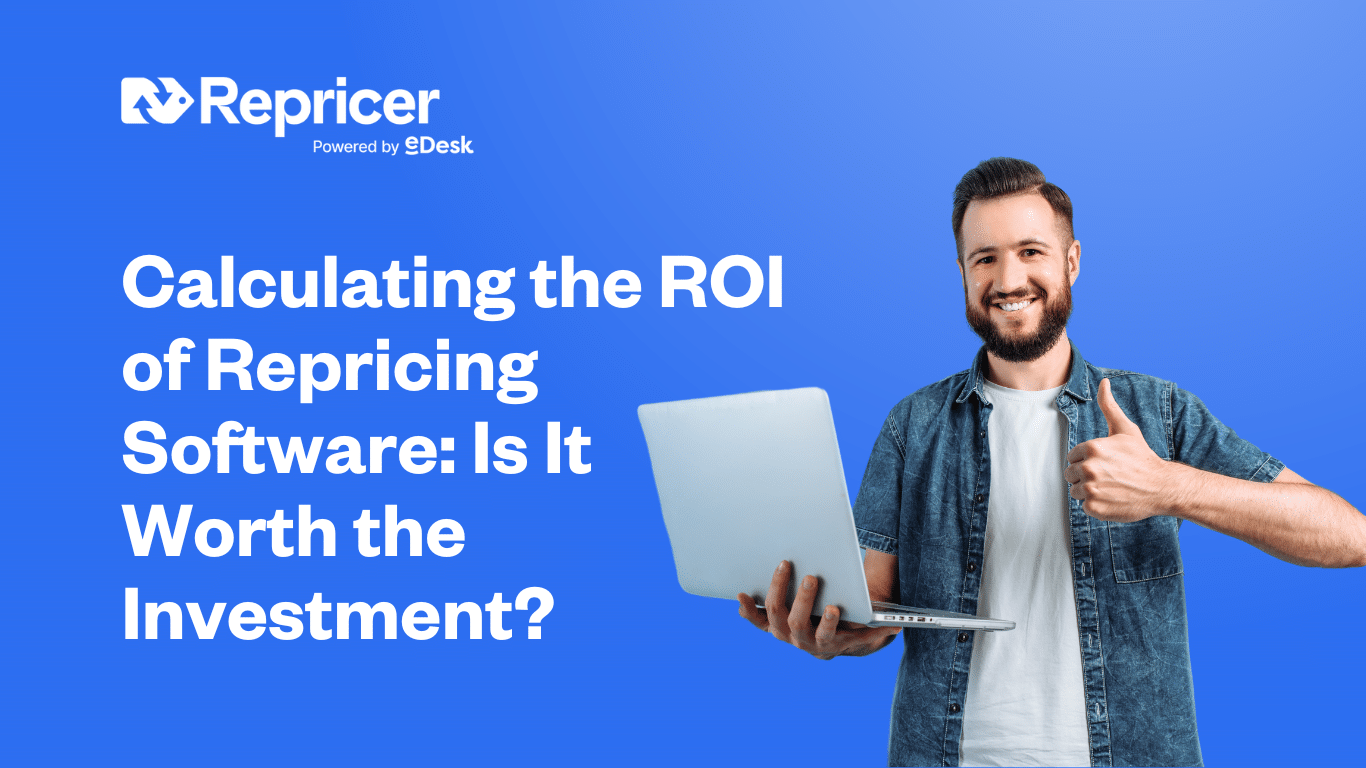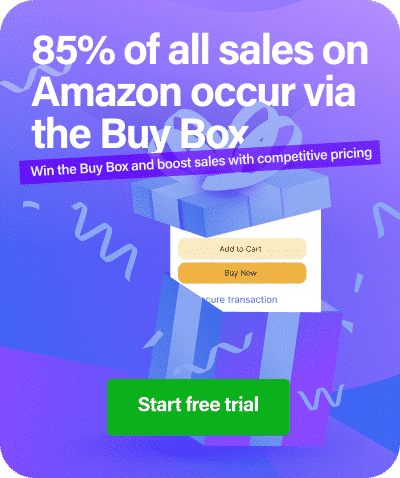As an eCommerce business owner, you’re constantly evaluating investments that promise to boost your bottom line. With repricing software costs ranging from $50 to $1,000+ per month, you might be wondering: how do I calculate roi repricing software and determine if it’s truly worth the expense?
The short answer? When done right, most sellers see their repricing software pay for itself within the first month. But let’s dig deeper into the numbers to help you make an informed decision.
Understanding the Return Components
To accurately calculate the value of automated pricing tools, you need to break down the potential returns into measurable components:
Increased Sales Volume
Repricing software users see an average revenue increase of $203,000 per seller over 30 weeks, according to recent industry data. This massive impact comes from improved Buy Box performance – the holy grail of Amazon selling.
When your pricing is optimized 24/7, you’re more likely to win the Buy Box, which can increase your sales volume by 20-35% for most products. For a seller with $50,000 in monthly revenue, this translates to an additional $10,000-$17,500 per month.
Higher Profit Margins
Repricing isn’t just about racing to the bottom. Smart automated pricing actually helps you maximize profit margins by:
- Finding the sweet spot between competitiveness and profitability
- Automatically increasing prices when competitors are out of stock
- Preventing unnecessary price wars through intelligent algorithms
Many sellers report profit margin improvements of 3-8% after implementing repricing software, particularly on private label products where they have more pricing flexibility.
Time Savings from Automation
Let’s talk about the value of your time. Manual repricing for just 100 products can take 2-3 hours daily. For larger inventories, some sellers spend 20+ hours per week on pricing adjustments.
Using automation tools could save you hundreds of hours of work a month, according to automation experts. At a conservative $25/hour value for your time, saving 10 hours per week equals $1,300 in monthly value, often more than the software cost itself.
Reduced Stress and Business Efficiency Gains
While harder to quantify, automation leaders reduce the cost of processes by 22% on average, with top performers achieving 37% cost reductions. The business efficiency gains from repricing automation include:
- 24/7 competitive monitoring without manual oversight
- Reduced human errors in pricing decisions
- Better inventory turnover through optimized pricing
- Ability to scale product catalog without proportional time investment
Breaking Down the Investment Costs
Now let’s examine the investment side of the equation:
Software Subscription Costs
Repricing software typically falls into these price ranges:
- Basic plans: $50-$150/month (up to 5,000-10,000 listings)
- Mid-tier plans: $200-$500/month (up to 50,000 listings)
- Enterprise plans: $600-$1,500/month (unlimited listings with advanced features)
Some providers use percentage-based pricing (1-2% of gross sales), which can be more affordable for smaller sellers but expensive as you scale.
Setup and Learning Time
Factor in 5-15 hours for initial setup and strategy configuration. While most repricing tools are user-friendly, you’ll need time to:
- Connect your seller accounts
- Set up pricing rules and profit protections
- Configure competitive monitoring
- Test and optimize your strategies
At $25/hour, this represents a one-time $125-$375 investment in setup time.
Training and Management Overhead
Budget 2-4 hours monthly for ongoing management, strategy adjustments, and performance monitoring. This ongoing time investment ensures you’re maximizing your repricer software cost benefit analysis.
A Simple ROI Calculation Framework
Here’s a straightforward formula to calculate your potential ROI:
Monthly ROI = (Revenue Increase + Time Savings Value – Software Cost) / Software Cost × 100
Example Calculation
Let’s say you’re a mid-sized seller with:
- Current monthly revenue: $75,000
- Repricing software cost: $300/month
- Expected sales increase: 15% = $11,250
- Time saved: 12 hours/week × 4 weeks × $25/hour = $1,200
- Setup costs (amortized over 12 months): $250 ÷ 12 = $21
Monthly ROI = ($11,250 + $1,200 – $300 – $21) / $321 × 100 = 3,758%
Even with more conservative estimates (5% sales increase, 6 hours saved weekly), you’d still see an ROI of over 1,000%.
Real-World Success Stories
While specific customer testimonials vary, the pattern is consistent across the industry. Small sellers often see their Customer Stories demonstrate ROI within 2-4 weeks, while larger sellers with complex catalogs may take 6-8 weeks to fully optimize their strategies.
One key factor in amazon repricer return on investment is choosing software that matches your business model. Repricer Features should align with your specific needs – whether that’s FBA optimization, multi-marketplace support, or advanced analytics.
Factors That Impact Your ROI
Market Competition Level
Highly competitive categories see faster ROI because pricing changes happen more frequently. In less competitive niches, the time savings may be your primary benefit.
Product Mix and Pricing Strategy
Private label sellers often see better profit margin improvements, while resellers benefit more from increased Buy Box share value. Understanding How Repricing Works for your specific product mix is crucial.
Implementation Quality
Your ROI depends heavily on proper setup and ongoing optimization. Sellers who actively manage their repricing strategies see 40-60% better results than those who “set and forget.”
Making the Investment Decision
Consider repricing software if you:
- Manage 50+ SKUs (or spend 5+ hours weekly on manual pricing)
- Sell in competitive categories where Buy Box changes frequently
- Want to scale your business without proportional time investment
- Currently lose sales due to non-competitive pricing
The Pricing should make sense for your business size, but remember that the cheapest option isn’t always the most cost-effective if it lacks features you need.
Common ROI Pitfalls to Avoid
Underestimating setup time: Budget adequate time for proper configuration to avoid suboptimal results.
Ignoring ongoing management: Repricing tools require periodic strategy adjustments to maintain peak performance.
Racing to the bottom: Focus on profit optimization, not just winning every Buy Box at any price.
Not tracking metrics: Monitor your repricer pricing comparison data to validate ROI assumptions and optimize further.
The Bottom Line
For most eCommerce sellers, repricing software delivers compelling ROI through a combination of increased sales, improved margins, and significant time savings. Companies that embrace advanced analytics report 5-8% higher marketing ROI than their competitors, and pricing automation falls squarely into this category.
The key is choosing the right tool for your business size and implementing it properly. Start with a free trial to test the waters, set realistic expectations, and track your results closely. Most sellers find that the value of automated pricing far exceeds the investment cost, making repricing software one of the highest-ROI tools in their eCommerce toolkit.
Ready to calculate your potential ROI? Start by identifying your current manual pricing time investment and estimating your competitive disadvantage from delayed price adjustments. The numbers usually speak for themselves.





